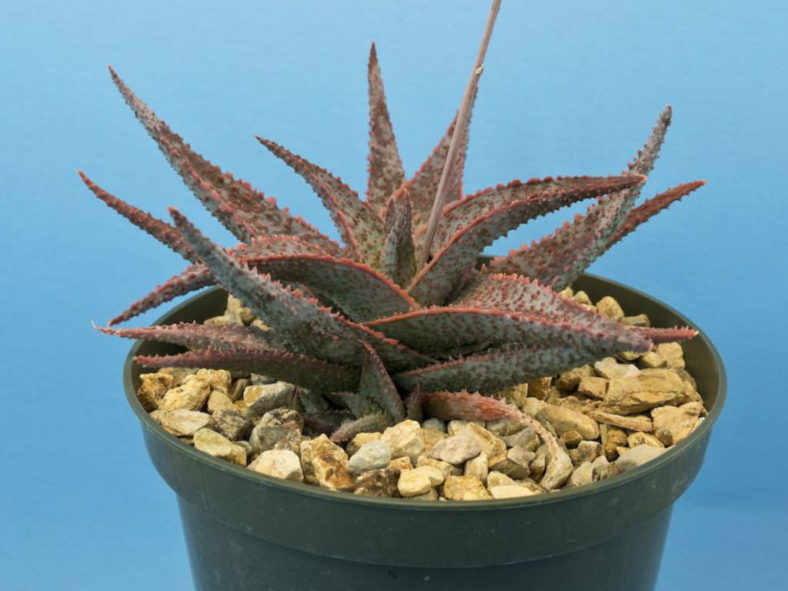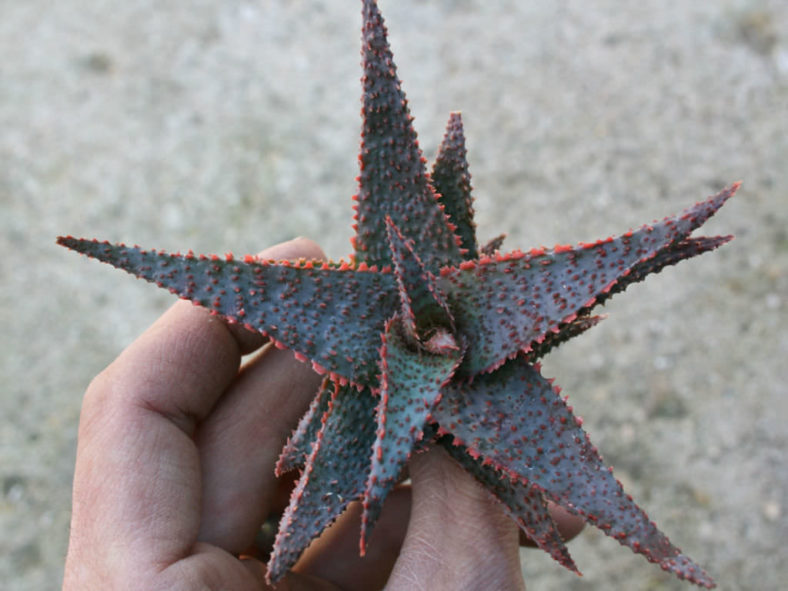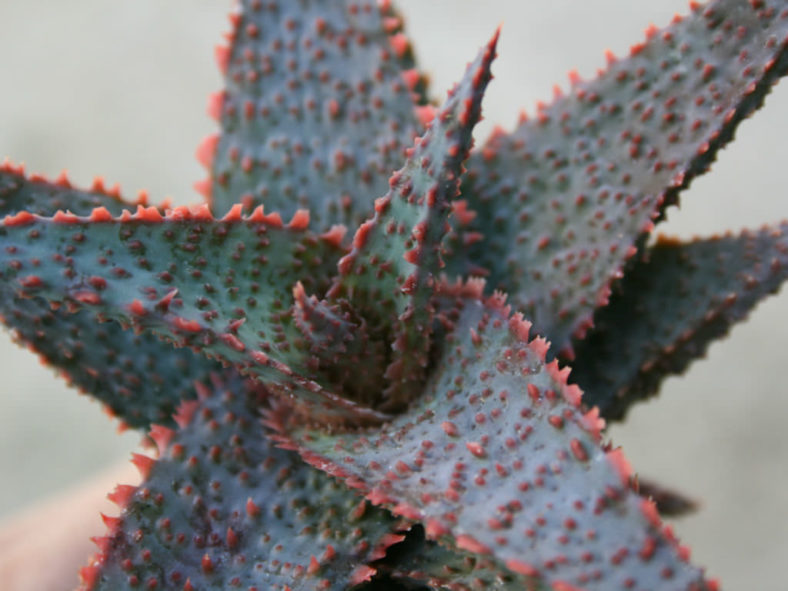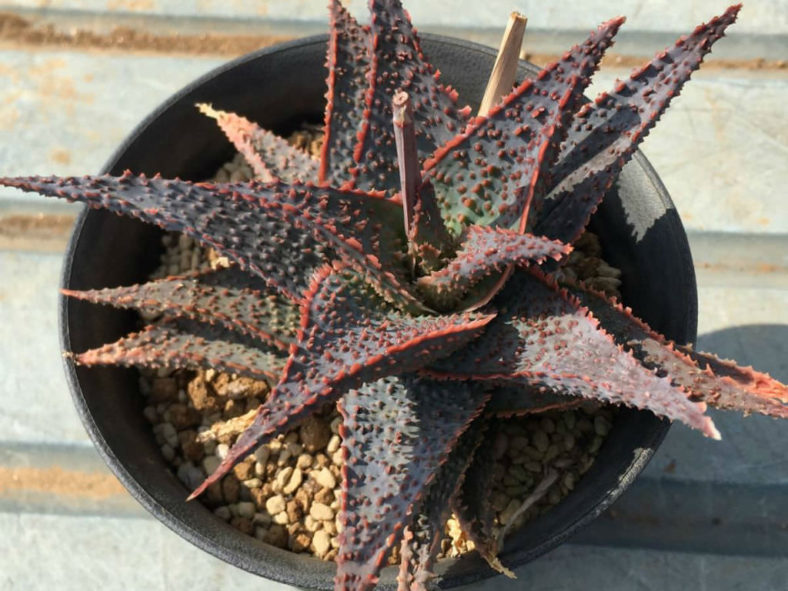Scientific Name
Aloe 'Lavender Star'
Scientific Classification
Family: Asphodelaceae
Subfamily: Asphodeloideae
Genus: Aloe
Origin
Aloe 'Lavender Star' is one of the Kelly Griffin fancy-foliage hybrids.
Description
Aloe 'Lavender Star' is a wild-looking succulent that forms rosettes of dark green, wedge-shaped leaves decorated with red spiny tubercles on both surfaces and reddish teeth along the margins. The rosettes can grow up to 6 inches (15 cm) tall and up to 1 foot (30 cm) in diameter and produce offsets at the base, forming a clump with age.
In winter, orange flowers rise above the foliage in racemes on erect, branched stalks.

Hardiness
USDA hardiness zone 9b to 11b: from 25 °F (−3.9 °C) to 50 °F (+10 °C).
How to Grow and Care
Aloes are very forgiving plants. However, as with all succulents, Aloe must never be allowed to sit in stagnant water, and the plant should be carefully monitored to watch for signs of overwatering.
Aloes are not particularly fast-growing and will only rarely need repotting. Repot plants in the spring that are tipping over their pots or have ceased growing. Use a fast-draining potting mix with one-third sand or pebbles. When repotting a larger plant, dividing the root ball carefully is possible. Some kinds of Aloe will send off offsets that can be potted independently.
It needs intense, bright light. Once acclimated, it can withstand full summer sun. In the winter, provide bright light. It prefers warmer temperatures of 70 to 80 °F (21 to 27 °C) but will survive down to 40 °F (4.5 °C). Feed with a cactus fertilizer in the summer only. Suspend feeding in the winter as the plant goes dormant.
See more at How to Grow and Care for Aloe.
Forms
Links
- Back to genus Aloe
- Succupedia: Browse succulents by Scientific Name, Common Name, Genus, Family, USDA Hardiness Zone, Origin, or cacti by Genus
Photo Gallery
Click on a photo to see a larger version.


